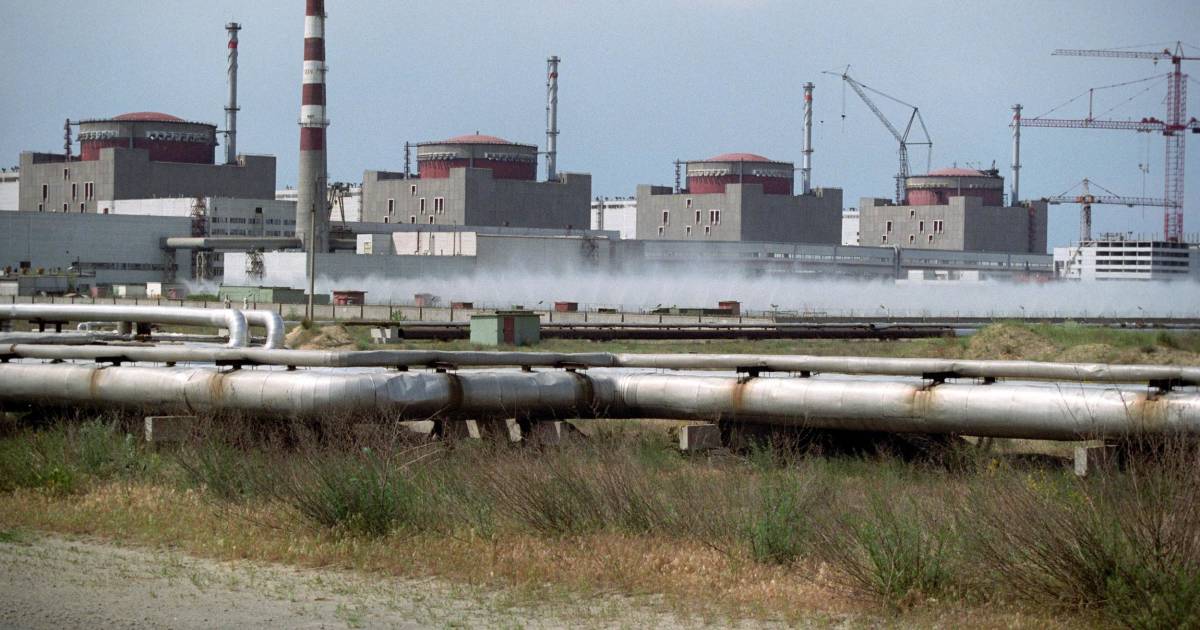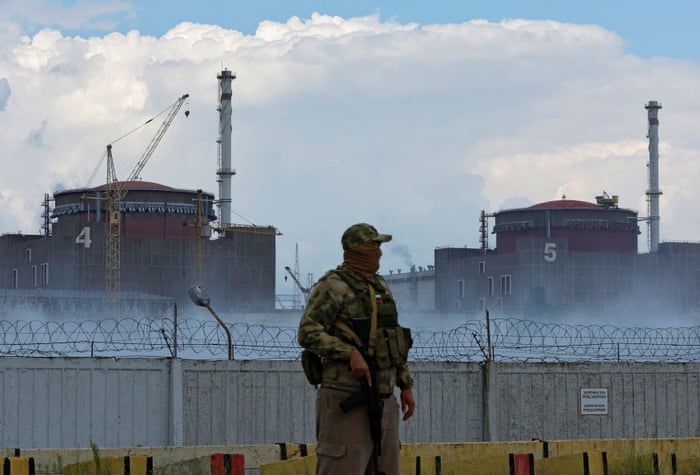
It’s Ukraine That’s Not Letting
Inspectors into the At-risk Nuclear Plant
Edward Lozansky / AntiWar.com
(August 12, 2022) — It is beginning to appear that beyond the increasingly likely exchange of nuclear weapons strikes between the US and Russia there is yet another scenario for a nuclear catastrophe that in recent days has presented itself in Ukraine.
According to the Director General of the International Atomic Energy Agency (IAEA), Rafael Mariano Grossi, “the shelling at Europe’s largest nuclear power plant Zaporizhya underlines the very real risk of a nuclear disaster that could threaten public health and the environment in Ukraine and beyond.”
The obvious question is who is responsible for this shelling?
As expected, Zelensky and his Western backers, including a complicit media, immediately accused Russia of this shelling, while Moscow is accusing Ukraine.
UN officials, at least so far, have not pointed fingers at either potential culprit but have continued to express deep concern over the dire state of affairs.
Rafael Grossi commented on the crisis saying: “Since the beginning of this tragic war, the IAEA — and I personally — have been working on supporting Ukraine in keeping all its nuclear facilities safe and secure.”
Actually, the head of the IAEA has been ready to lead a mission to inspect the safety, security and safeguards of the Zaporizhya power plant but for unknown reasons this has been prevented from occurring thus far. One wonders why.
Since the Russians control this plant, and actually the whole city of Zaporizhya, it would be pretty odd if they decided to shell territory they already hold. Besides, the Russians publicly claim that they keep urging the UN to send their mission as soon as possible Up until now, those appeals have fallen on deaf ears.
Grossi says that his team would also provide impartial and independent information about the status of the Zaporizhya facility but regrettably this vital mission has not yet happened, and not because of the IAEA.
“Despite our determined efforts, it has not been possible, so far,” said Grossi. It would be interesting to know who prevents his team to take this trip.
Grossi keeps making statements that he is not going to give up and will “continue to push — and push again — for this IAEA mission to finally take place.”
Good for him, and also for UN Secretary General António Guterres, who makes similar statements but to no avail. All this is very suspicious.
Apparently, some powerful folks are not interested in presenting the truth but, taking into account that this plant is the largest in Europe, its explosion would be a lot more powerful than that of the 1986 Chernobyl disaster. Horrifying as the thought is, maybe some people somewhere want that to happen?
As for determining the culprits of these crimes, somehow I believe we need more reliable witnesses than Zelensky to tell the truth. More and more witnesses, including Amnesty International and western journalists, report that Ukrainian army is responsible for using civilians as human shields, placing artillery near schools and hospitals, shelling of civilian targets, including water, electric, and gas infrastructure, at times using NATO-supplied weapons and petal mines which are specifically prohibited by EU-Ukraine agreements signed back in 2013 per the Ottawa Convention.
Indeed, the EU and NATO were supposedly helping Ukraine destroy its petal mine stockpiles. In any event, if the UN has any relevance left at all, the immediate dispatch of an IAEA team to this nuclear power plant is long overdue.
Edward Lozansky is president of the American University in Moscow. Reprinted from Kontnient USA.
‘Very Alarming’ Conditions at Ukraine’s Zaporizhzhia Nuclear Plant, IAEA Chief Warns
(August 11, 2022) — “These military actions near such a large nuclear facility could lead to very serious consequences,” Mr. Grossi said at the meeting requested by Russia, which was marked by resounding calls to allow the Agency’s technical experts to visit the area amid mounting safety concerns.
IAEA has been in frequent contact with both Ukraine and Russia to ensure that it has the clearest picture possible of the evolving circumstances.
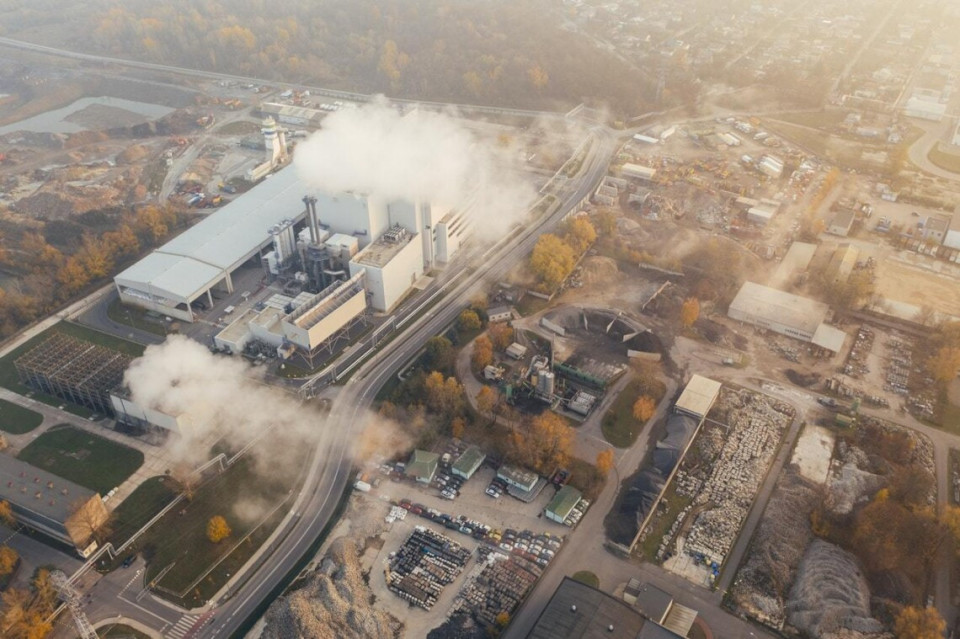
Europe’s Largest Nuclear Plant Shelled
Providing an overview, the IAEA chief said that on 5 August, the Zaporizhzhia plant — Europe’s largest — was subjected to shelling, which caused several explosions near the electrical switchboard and a power shutdown.
One reactor unit was disconnected from the electrical grid, triggering its emergency protection system and setting generators into operation to ensure power supply.
The senior UN official said that there was also shelling at a nitrogen oxygen station. While firefighters had extinguished the blaze, repairs must still be examined and evaluated.
No Immediate Threat
He said that the preliminary assessment of IAEA experts indicate that there is no immediate threat to nuclear safety as a result of the shelling or other military actions.
However, “this could change at any moment,” Mr. Grossi cautioned.
Overarching Goal
He recalled his recent address to the ongoing Tenth Review Conference of the Parties to the Nuclear Non-Proliferation Treaty, where he outlined seven indispensable pillars that are critical for nuclear safety and security.
These included aspects dealing with the physical integrity of the plant, off-site power supply, cooling systems, and emergency preparedness measures.
“All these pillars have been compromised if not entirely violated at one point or another during this crisis,” flagged the IAEA chief.
“Any nuclear catastrophe would be unacceptable and thus preventing it should be our overarching goal”.
He asked both sides to cooperate with the UN atomic agency.
“This is a serious hour, a grave hour, and the IAEA must be allowed to conduct its mission in Zaporizhzhia as soon as possible”.
Trading Blame
Presenting his case, the Russian delegate said Ukrainian forces used heavy artillery against Zaporizhzhia on 5 August, shelling the plant during a shift change to intimidate staff — their own citizens.
He upheld that on 6 August, those forces attacked with cluster munitions, and on 7 August, a power surge occurred, blaming.
The Russian Ambassador blamed Kyiv for refusing to sign a trilateral document issued by IAEA, stressing that Moscow strictly complies with the IAEA Director General’s seven principles.
In turn, Ukraine’s representative said that the withdrawal of Russian troops and return of the station to the legitimate control of Ukraine is the only way to remove the nuclear threat at Zaporizhzhia.
The Ukrainian Ambassador insisted on the need to send a mission to the site and has negotiated modalities with the Agency.
“Despite their public declarations, the occupiers have resorted to manipulations and unjustified conditions for the site visit,” he said.
Given the militarization of the site by Russian armed forces, such a mission must include qualified experts in military aspects.
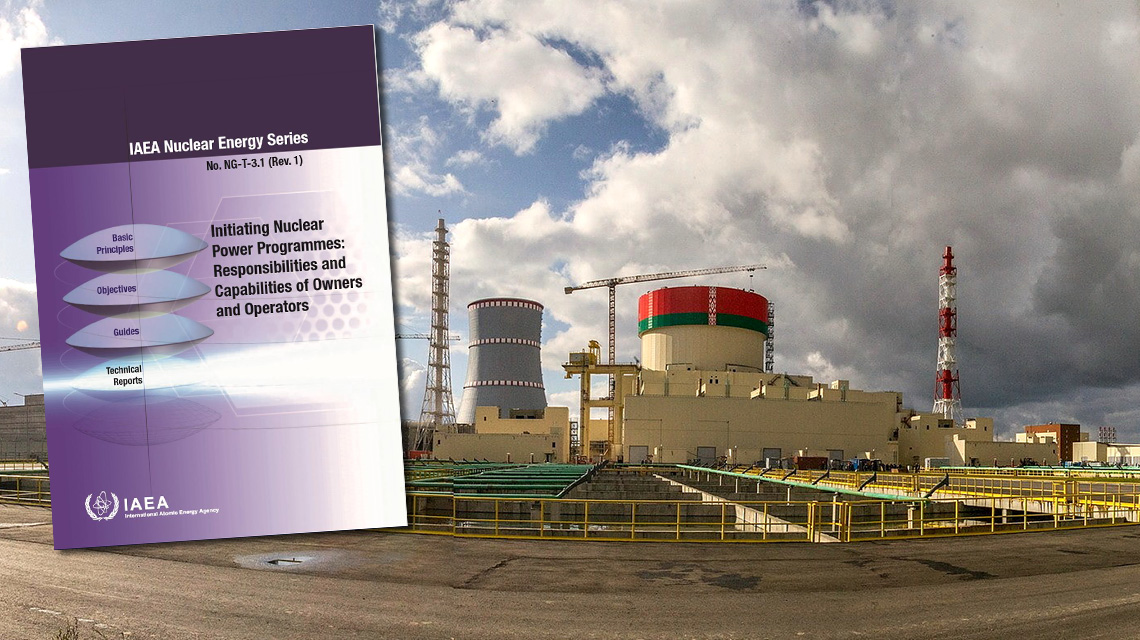
Make the IAEA Mission to ZNPP Happen
Mark Hibbs / Arms Control Wonk
(August 12, 2022) — The International Atomic Energy Agency (IAEA) is an international governmental organization of which both Russia and Ukraine are members, and so it is profoundly challenged by nuclear safety and nuclear security threats unfolding at the Zaporizhzhia Nuclear Power Plant (ZNPP).
Because the crisis at the plant was triggered by Russia’s invasion of Ukraine on February 24 in violation of international law, and directly follows from Russia’s military assault and occupation of the installation on March 4, the IAEA can do little to effectively respond in close quarters without, in effect, having to take sides and name names.
Russia is a permanent member of the IAEA’s most important policy organ, the Board of Governors. Russia, probably joined by China (another permanent board member) would vote against any resolution tabled by the board addressing Russia’s conduct in the war. They already did so once, on March 3. Then, a majority of the board’s 35 members voted to deplore Moscow’s actions in Ukraine. Russia and China voted against the resolution.
One day later, invading Russian forces overran and occupied ZNPP. According to Ukrainian and IAEA officials, since March 4 threats to nuclear safety and nuclear security at ZNPP have emerged and greatly magnified. The IAEA Secretariat led by Director General Rafael Grossi therefore wants to conduct a mission to the power plant.
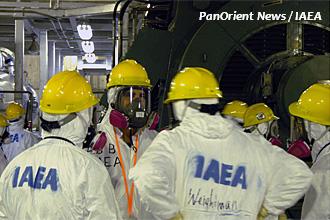
Challenges and Risks
Until very recently, such an IAEA intervention has not been possible because both Ukraine and Russia appeared to set conditions that were unacceptable to the other side, and because IAEA member states were reluctant to firmly embrace Grossi’s initiative.
Russia, if media accounts are accurate, would not permit a visit to ZNPP without IAEA representatives getting express visa approval from Russian authorities. Last month, Ukrainian sources said Kyiv had opposed an IAEA visit because in its view that would honor Russia’s claim to occupy the power plant.
The IAEA Secretariat has limited legal authority to put feet on the ground at ZNPP. Under Ukraine’s IAEA safeguards agreement, the IAEA Secretariat may send safeguards inspectors to ZNPP since the IAEA is obligated to verify that nuclear materials in Ukraine are accounted for. But Grossi has no express authority under any binding agreements to compel Russia or Ukraine to open their doors to IAEA personnel to pursue any nuclear safety or nuclear security concerns at any installation.
If Vienna diplomats and Ukrainian officials are to be believed, regardless of Grossi’s strong interest to intervene, the political will of the IAEA may have been blunted by a culture of member state influence trading that provides states a reach-in to senior IAEA staff that may reduce the effectiveness of the Secretariat in responding to nuclear safety concerns.
In 2011, some member states objected that Japan had meddled in the Secretariat’s early response to the severe nuclear accident at Fukushima-Daiichi. In 2022, Ukraine has charged that Russian staff in the Secretariat have interfered in Moscow’s favor with the IAEA’s response to the current crisis.
For the IAEA, sending a mission to ZNPP would entail certain risks. First and foremost, ZNPP is located in a war zone occupied by invading forces; IAEA personnel might be threatened by combat including during travel to or from the site.
During a visit, IAEA staff might be subject to pressure, manipulation or propaganda; should an IAEA mission materialize, the IAEA may have to explicitly state that, by visiting ZNPP, it is not honoring Russia’s occupation of the nuclear power plant.

Effective IAEA Engagement
These challenges notwithstanding, the scope of potential consequences from a further escalation of the current crisis render imperative that the IAEA, in consort with United Nations Secretary General Antonio Guterres, and with member states’ firm support, carry out a technical mission to the plant with the express purpose of assessing and responding to nuclear safeguards, safety, and security risks following from Russia’s invasion of Ukraine.
In recent days, by all accounts the plant site appears to have been shelled by combatants. According to Ukraine nuclear officials, on August 7 two ZNPP workers were injured during attacks, one of which suffered shrapnel wounds and was taken to a hospital intensive care unit. During attacks, they said, missiles hit a spent fuel dry storage facility equipped with 174 containers, each holding 24 spent fuel assemblies. Beginning in March, Ukraine has raised plausible allegations that Ukrainian plant operators have been intimidated and subject to violence by occupiers.
According to Ukrainian officials in mid-July, about 500 Russian military personnel were at the plant site, and following from turmoil there two of four 750-KV lines supplying power to the plant were inoperable, increasing the risk, they said, of a station blackout should further damage to power supplies be incurred.
This week, media reports asserted that an additional power line was damaged; some accounts stated that the plant was compelled to connect to auxiliary diesel generators for power. None of these reports can be independently confirmed because no independent experts have been on the site since ZNPP was overrun.
The recent escalation of nuclear risks at ZNPP has prompted the United Nations Secretariat, nuclear professional organizations, and the G-7 group of states to register their official support for an IAEA mission to the plant. It would also appear that diplomacy has been underway to sway Moscow and Kyiv to agree to an IAEA mission on like terms.
On August 11, in the background of a UN Security Council meeting held that day to confer on the crisis, Russia’s ambassador to the IAEA tweeted Moscow’s support of the IAEA going to the plant. Ukrainian sources this week also said that Ukraine now strongly favors the IAEA leading a mission to ZNPP. The United States and the UN Secretariat have proposed that a facilitating ceasefire be arranged.
These developments should prepare the way for the IAEA Board of Governors to request that the IAEA Secretariat carry out an expert mission to the plant. The board might urge Grossi to report to member states concerning, inter alia: 1.)
Competing claims by Russia and Ukraine that the other side has fired missiles at ZNPP; 2.) claims by Ukraine that Russian occupiers are harassing and intimidating Ukrainian personnel; 3.) claims by Ukraine that Russian forces have mined the installation and introduced explosives into the site; 4.) Ukrainian assertions that Russian forces have launched artillery attacks from inside the nuclear power plant site including at targets on the Dnieper River; 5.) the vulnerability to sabotage and military attack of critical systems and plant equipment, on-site and off-site power supplies, and spent fuel stored on the site; 6.) procedures and actions to perform scheduled and unscheduled maintenance including equipment replacement and repair; and 7.) the provision of oversight including the interaction of Russian and Ukrainian personnel.
Based on information obtained during a visit to the plant, including unchaperoned interviews with Ukrainian operators, and observation of critical equipment at the station, the IAEA Secretariat may provide member states an assessment of nuclear risks and make recommendations to Russian and Ukrainian personnel that are aimed at reducing specific risks.
At Chernobyl in 1986 and Fukushima-Daiichi in 2011, complacency contributed to severe accidents, which destroyed nuclear power plants and led to widespread destruction and trauma.
In Vienna and at Zaphorizhzhia in 2022, expeditious action by the IAEA Secretariat and Board of Governors could help significantly reduce the odds of a nuclear accident at ZNPP. This week the world’s media have been focused on fresh and alarming allegations about the safety status of ZNPP.
In coming weeks and months international attention may shift elsewhere, especially if Russia’s war appears to drag on indefinitely and the world anticipates that fighting will grind to a stalemate. That assumption could be fatally wrong; a sudden change in the fortunes of war near the power plant could immediately escalate nuclear risks. No news at ZNPP may also mean bad news. In any case, extraordinary nuclear dangers at ZNPP loom and they need to be assessed and addressed now.
Posted in accordance with Title 17, Section 107, US Code, for noncommercial, educational purposes.

